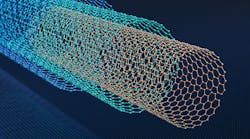Biotech Production: Planning, Scheduling and Throughput Analysis with a Combined Theory of Constraints, Lean and Simulation Approach
By Steve Haekler, Kyle Stretch, Dale Schroyer, and Tony Zaino, ProModel Corp.
A major biotech company’s only final stage bio-manufacturing facility in the world was struggling to meet rapidly increasing customer demand. Unanticipated production delays and frequent starvations at critical parts of the operation were causing not only late and missed deliveries, but also the expiration of product batches at a cost of approximately $1 million per batch.
They had not been able to identify the root cause of their production delays, nor find a suitable solution. As a result, they were planning to invest $1.2 billion to add another 500,000 square feet to the existing biotechnology bulk manufacturing facility. Before proceeding with a capital investment this large, it made sense for the team to make sure they had considered all other feasible solutions first and/or at the very least validated their assumptions leading them to the conclusion of needing additional space. They engaged ProModel Corporation to help.
We recognized that this project would require a discrete-event simulation solution along with aspects of Lean and TOC (Theory of Constraints). Lean is commonly applied in manufacturing in order to reduce and eliminate waste, TOC is used to help discover which issues are limiting the overall system performance and Simulation is used when the variability and interdependencies of a process or system are such that traditional problem solving approaches are too risky or inaccurate.
This article discusses how using a combined lean and simulation approach helped one pharmaceutical manufacturer produce two more lots per month resulting in additional revenue of $25 million/month as well as eliminating expired batches at a savings of $1 million/batch, without expanding the facility at a projected cost of $1.2 billion.
Due to a confidentiality agreement with the manufacturer we can not disclose their name, but we provide this case study and best practices article as awareness and exposure to the idea of using simulation in combination with Lean and TOC to solve complex manufacturing throughput and scheduling issues.
We worked together with the client’s project team using TOC, Lean and Simulation to do the following:
- TOC to discover the bottlenecks
- Lean principals as a way to develop the ideas and concepts that could help resolve the problems
- Simulation as a way to test and analyze these ideas and determine precisely how to implement the best ones, all without risking any interruption to the on-going production process.
- An additional advantage of a simulation solution is that most of the time the organization also gains a problem solving tool and capability that can be used over and over again to solve and even prevent similar future problems.
ProModel’s approach is an iterative three phase process called VAO (Visualize, Analyze, Optimize). The remainder of this article will summarize how Lean and Simulation were used synergistically within this approach to achieve the client’s objectives. Within each of the VAO sections, there will be some best practices listed at the beginning, and then some specific examples of how those practices were used in this particular project.
The specific client objectives for this project were to:
- Uncover the root cause(s) of the unanticipated delays creating the late and missed deliveries.
- Develop a repeatable, accurate predictive tool that allows them to analyze and identify, in a risk free environment, which potential changes will eliminate the current delays and help prevent future ones.
- Determine if, when, and how much additional capacity from a new facility would be required.
VISUALIZE Phase – Understand Your Current State Environment
Best Practices
The visualize phase helps the organization better understand their actual current operating state and sets up the entire project correctly in several ways:
- Ensures the right problem or issues are being solved. This is done by starting with the end in mind; identifying the actual results that need to be achieved, and then what type of output information the simulation model must produce in order to help make decisions on the appropriate process or policy changes.
- Helps the company truly understand how their current environment is actually operating through building, validating and verifying a current state model, not just how they think it’s operating.
- Often organizations gain a great deal of value from simply going through the process of gathering data and putting together VSM (Value Stream Maps) or Process Flow Charts without ever simulating. If the maps exist, then the simulation step helps them to take advantage of work they have already done.
- Building and validating the current state simulation model can then further enlighten an organization without even testing the first new idea by identifying through sensitivity analysis which processes or resources are really critical (bottlenecks) to meeting their performance goals so that you only spend time on improving the areas that really matter
- Builds trust in the simulation concept by allowing those involved to visualize the current operation and say “yes this is how things really do work around here”.This paves the way for the optimize phase so that when changes are proposed, there will be more confidence in accepting the results predicted by the model from implementing the changes.
- Provides a measurement of the gap between current and required performance
Project Implementation
In this case, starting with the end in mind, the project team determined that the model had to replicate not only the manufacturing process itself, but also the production planning/scheduling aspect of the current system as well. This necessitated taking into account parameters such as: workforce resources, process flow, inventory levels, availability and movement, equipment, scheduling, and product mix. The simulation output information generated had to enable the Production Planning Team to test schedules, visualize the impact on throughput and cycle time when changes are made to these parameters, and provide the optimum schedule to the Production Execution Team.
Therefore it was determined that value stream maps/process flow charts were needed for their manufacturing system including inventory policies and production planning/scheduling methods. Microsoft Visio was used to create the VSM’s and ProModel’s Process Simulator, a plug-in to Visio was used to convert VSM’s into simulation models. (below)
To develop this model it was necessary to collect current and historical data on the production operation and use that as a base line for setting up and validating the simulation model.
The VSM’s would serve as the virtual representation of the production process for the animated simulation runs. Customizable ProModel compatible Excel input templates were also designed within the tool to enable the team with the capability of changing model data for rapid “what-if” scenarios. The model was then integrated with scheduling software. After running each scenario, the team was then provided with Gantt charts that allowed them to examine actual planned schedule performance.
Summary of Steps to Develop Model
- Microsoft Visio was used to map out the process flow and used as the virtual foundation for the model. If the analysts want to change or add a new process they simply change the flow chart and it automatically updates the model and the Microsoft Excel input templates.
- Excel input templates made it easy to change production tasks, process times, and the resource requirements.
- Scheduling software was integrated with the model and was used to evaluate the proposed schedules with Gantt chart output reports.
- Easy to use Design of Experiment capabilities in concert with a set of user definable Key Performance Indicators provided the method to rapidly evaluate system performance across an unlimited number of scenarios.
Working with the client project team it took about 8 weeks to create and validate an integrated production simulation and scheduling model. After the model was built and historical data used to validate and verify that the existing model was with an acceptable range of accuracy of the real system, usually 95% or better, the next step was to begin analyzing the situation.
ANALYZE Phase – Identify Root Cause(s) and Brainstorm Potential Changes Using Lean Concepts
During the analyze phase the model is used to help identify root cause(s) of performance issues as well as to brainstorm ideas and create scenarios that might improve the processes to meet business objectives
Best Practices
Before beginning to test anything, utilize the current state model to view the animation and generate output reports that allow analysts to diagnose what issues are keeping them from operating up to the designed system performance levels. Lean concepts and thinking can then be used to develop a list of feasible ideas to test in order to improve performance based on truly knowing what is wrong. It’s tempting to want to test everything because experimenting with the model can be “cool”. However, from a time, cost and reality standpoint, you can’t test everything so it makes sense to test only what Management would actually consider implementing.
Once a feasible list of ideas was generated and prioritized typically the model needs to be enhanced to incorporate the actual changes to be tested. Depending upon which changes are to be tested the model can be modified to include just the first test or all of the tests; this has to be determined on a case by case basis.
Lean methodology prescribes having a Kaizen Event in order to implement changes, where the changes are implemented based on value stream map analysis and the suggestions of the people doing the work at a particular station or process. This is a good idea on much of the low hanging fruit. However, when proposed changes are too risky or too complex to test with the traditional Lean Kaizen Event method, simulation is a more effective tool to conduct “Virtual” Kaizen Events.
Project Implementation
On this project, they used the validated model of their current state to observe the animated representation of the system as well as several types of output reports to help identify their underlying performance issues as follows:
1) The key bottlenecks or pacing processes changed radically depending on the product mix. If the product mix changed enough, an item that was on the critical path and crucial to delivery one month may not be on the critical path the next month.
2) With a schedule and inventory based on the constant manufacturer driven PUSH system, the client couldn’t respond fast enough to the unstable changes in demand, which led to their debilitating system constraints.
The manufacturer’s Industrial Engineering (IE) team had previously looked at many aspects of their production system as possible causes for the inadequate throughput and subsequent batch expirations. However, until beginning this project with ProModel they had not seriously considered possible cause or solutions outside of the traditional plant floor improvements such as additional equipment or labor, or additional space as discussed earlier. This time around though, their IE team, working with us under the VAO approach, considered the entire production environment not just the plant floor manufacturing processes.
As a result, while collecting information and developing the current state model, the Industrial Engineering Team discovered that Production Planning was scheduling using a PUSH system. The team thought that changing to a PULL/JIT (Just-In-Time) system might help reduce the delays, which made sense considering the root cause discovered. This is very much a lean concept, because normally changing from a push to pull system helps to reduce waste such as excess inventory, prevent scrap, damage, and rework and obsolescence, such as the expiring batches that this manufacturer was experiencing. The team decided to pursue this alternative as the first option to test with the model.
Changing to a pull strategy required answers to the following questions before implementation:
- What levels of inventory should be used to ensure line continuance, but not result in lost batches due to expiration?
- If/when would additional labor be required?
- When in the future, if at all, would additional line capacity be required?
- More Info required here
Once the decision was made to analyze a Pull strategy, some additional functionality had to be added to the model including:
- User friendly input settings were implemented to adjust varying levels of inventory controls by sub-process and the different lot types which included vial, syringe, and drug type.
- Provide Customized Input Templates to enable the team with the capability of changing model inputs for rapid “what-if” scenarios.
- Provide a Gantt Chart Report (figure 5.jpg) to enable team with the capability to examine actual planned schedule performance including the output of supporting services requirements
- Develop Scenario Runner interface for rapid “what-if” analysis of process improvement suggestions.
- Provide an iterative planning correction procedure to enable the team with the capability to examine the performance of the system and make iterative changes to improve and correct planning issues.
After updating the base model to be representative of a pull strategy, and verifying that it works correctly, the team moved on to the Optimize phase in which it would evaluate in detail if this new approach works, if so, what are the operating parameters, scheduling rules, inventory levels and policies that must be implemented in order to reach maximum capacity.
OPTIMIZE – Design the Future State Operating Environment
During the optimize phase, the model is utilized to test the ideas generated in the Analyze, in order to determine the optimum set of changes to make in order to reach the planned objectives.
Best Practices
When starting to use a simulation model to test ideas, scenarios are usually created and run in a particular sequence to help get at a result in the most efficient manner:
1) Run the “Current State” scenario in order to have baseline results available
2) Design and run scenarios from a high level, with only the level of detail/resolution needed down to lower level details. Running scenarios with more resolution than needed makes finding the optimum solution more difficult than it needs to be.
3) Test only the changes at the bottleneck or constraint to start with. Until the bottleneck/constraint situation is resolved, testing other changes will not necessarily be meaningful.
4) Run additional scenarios with increasing breadth across the system and/or increasing levels of detail and resolution as needed until the optimum solution set is found. This is the new future state environment.
5) Test the robustness of the system by varying input parameters to push the boundaries in order to see how much performance is affected when things don’t go according to plan.
6) Finally, repeat steps 2-6 in an iterative fashion as required if the first strategy does not produce the desired improvement.
Project Implementation
Using the best practices steps above, the team utilized the model to run scenarios around schedules and inventory levels in order to predict and quantify the realistic throughput performance of their proposed PULL system. Key Performance Indicators were available after each simulation run in the software output reports module. These output deliverables included: Overall Cycle Time, System Throughput, Work-in-process levels and Resource Utilization. From each of these data charts the IE team was able to compare scenario results and refine each simulation run until the optimal integrated production schedule was discovered.
Some of the key items tested in modeling the pull system were as follows:
- Starting the precursor activities to the formulation and filling processes 5 days before the production date to allow for needed equipment or subassemblies to be manufactured.
- The start date and time of the formulation and filling lots.
- The time lag between input start and formulation or filling lot start were controlled by delay tasks that appeared as inputs in the task controls tab of the input spreadsheet.
- Both planned and unplanned downtimes affecting the schedule were modeled in a similar manner, using two pieces of information: the frequency and duration of each downtime.
- Inventory levels
- Product mix and batch/lot sizes
The solution confirmed their idea that the production environment had to be converted to a PULL system in order to meet the required customer demand and still have enough capacity to absorb predicted variation. Additionally it took less than 8 weeks for the project team to arrive at this optimal solution and immediately they made the necessary changes to convert to a Lean, demand driven, PULL system.
If optimize the model performance of the future state system with the PULL strategy would not have been sufficient, then the next iteration of Analyze and Optimize would have started, and a second idea or strategy would have to be tested in addition to or in place of the PULL concept.
RESULTS
The simulation solution allowed them to define the right combination of scheduling sequence, product mix, batch size, in-process inventory and process changes that enabled them to meet customer demand virtually eliminated line starvations, batch expirations, and late/missed deliveries.
The client project team, working together with ProModel and the solution above, were able to accomplish the following:
- Determined how, the facility could produce two more lots per month, which has resulted in a monthly revenue increase of over $25 million.
- Defined the right combination of in-process inventory levels and process changes (going to a pull system) that would virtually eliminate batch expirations, which resulted in cost avoidance of over $3 million per year.
- Developed the capability to quickly schedule around the impact of significant unplanned downtimes.
- Provided the ability to optimize labor use and eliminated the need for additional staff.
- Provided a better way to do long-term expansion planning and predict when and where more line capacity would be required, thus eliminating the immediate need to spend $1.2 billion on additional manufacturing space.
DELIVERABLES
Deliverables to the customer for this project included the following:
- Recommendations arrived at with their IE and Production teams to convert to a pull system with precise metrics and specific process changes in order to improve performance to desired levels
- Repeatable strategic and tactical planning capability through the Customized Flexible, Reusable Predictive Modeling Application
- Technology Transfer Training and documentation to provide their team with a detailed understanding of the solution construction, input templates, Scenario Runner and output reports so they can continue using the model to plan and optimize the process into the future.
CONCLUSION
Best Practices
We have found the following four steps are used by our most successful clients in order to engrain simulation into the culture of the organization.
1) Build a model to answer the current questions with available data, don’t dive too deep right away.
2) Refine and expand the model as needed to answer tomorrow’s questions.
3) Build up internal core competency over time by developing two or three expert model builders and many experienced in using the models built for them. Organizations can build and benefit most of their own simple to medium complexity models this way
4) Use a simulation consultant for very complex situations.
Project Implementation
In this case simulation proved to be a powerful tool. In general it can be used alone or along with other methodologies such as Lean and Theory of Constraints in order to help reduce the risk and improve the speed and accuracy with which an organization can do the following:
1) Perform root cause analysis on underperforming processes and systems.
2) Provide an objective sand box like environment in which to test new ideas, strategies, and policies in order to determine the most effective courses of action for each individual organization.
3) Gain an organizational capability for predictive, preventative performance planning and process improvement.
This particular Biotech Company now has a capability to constantly re-examine the performance of their system and make the changes needed to improve and correct planning issues before they occur and create significant problems. By predictively analyzing their production planning, scheduling and throughput scenarios in a no risk simulated environment, they will continually make better decisions faster.






